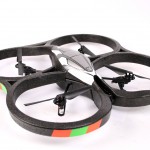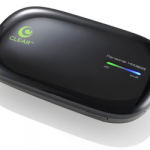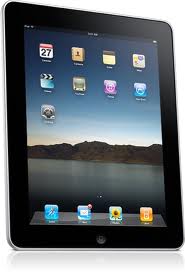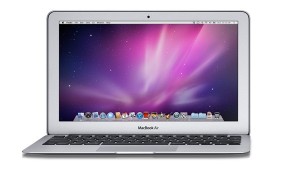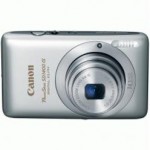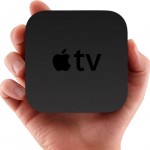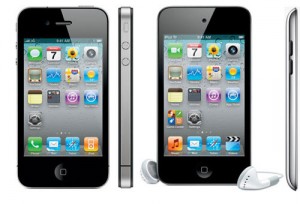Posts by Marcel Brown
Holiday Tech Toys 2010!

Jawbone Icon
I consider the Jawbone to be one of the best Bluetooth headsets on the market. Their latest Jawbone, the Icon, has a lot of
new features that add to an already impressive device. For example, on supported phones like the iPhone, the battery levelof the Jawbone will display on screen, so that you never need to guess just how much battery charge your headset has left. If someone you know has a Bluetooth headset on their gift list, you will likely not go wrong with the Jawbone Icon.
AR.Drone
Unlike most of my Tech Toys, this item is actually a toy! However, it can be played with by kids of all ages. The detailed description of the AR.Drone can be read elsewhere on the web, but let’s just describe this as a remotely piloted flying quad-helicopter with a video camera “eye”. Controlled using the motion sensitive capabilities of an iPhone or iPod Touch, the pilot can actually see what the AR.Drone sees! Jimmy Fallon actually had one on his show over the summer, so I expect that this item will actually be on quite a few wish lists this year.
Wireless Hotspots
As we all have become increasingly dependent on technology, we find ourselves needing access to the Internet while we are away from home. While we can often find free Wi-Fi hotspots, it is not always convenient to depend on someone elseto provide us with connectivity, especially now that unsecured hotspots can be risky to use. Many people have used USB cellular data devices, but the drawback being that only one laptop at a time could use the connection. Fortunately, many cellular providers are now offering “mobile hotspots”, which are basically devices that connect to a cellular provider’s data network and then rebroadcast that connection via Wi-Fi. Laptops or other mobile devices such as iPads or iPod Touches can then all share that connection without any sort of installation or complicated configurations.
iPad
Does this item really need any introduction? The iPad will likely be one of the biggest selling devices of this holiday season. If you need a quick primer on the iPad, read my previous article from this year. The iPad is proving especially popular as gifts for teenage or younger children, for senior citizens, and anyone who wants a simple computer for reading web pages, reading eBooks, viewing photos or video, and reading and writing e-mail.
MacBook Air
MacBooks always make my Holiday Tech Toys articles because they are just so
darnpopular! But this year, Apple has introduced the next generation MacBook Air, and so far it has been flying off the shelves. With an even thinner design, solid state storage, and a lower starting price, Apple seems to have hit the sweet spot on ultra-light laptops. If you know someone that needs a laptop (as opposed to an iPad), make sure to check out the new MacBook Air.
iMac
A recent Facebook post from one of my friends asked why the iMac is so sexy. I don’t know about you, but computers are not generally referred to as sexy! But for someone on your gift list, an iMac with a 21.5″ or 27″ screen, quad-core processor, wireless keyboard and mouse, and lack of messy cables just might get their blood running! So don’t settle for some bottom of the barrel PC when you can get the sexiest computer on the planet!
Canon PowerShot SD 1400 IS
It’s tough to recommend digital cameras. So when I wrote a Tech Toy article about the Canon PowerShot SD 780 IS earlier this year, I thought I made a good recommendation. Unfortunately, that model was soon phased out by Canon. Fortunately, it was replaced by a new model with slightly better specs, the PowerShot SD 1400 IS. If you’re looking for a model that doesn’t need 720p HD video recording capability, the SD 1300 can save you some money, but for about $179 street price, I’d go ahead and splurge for the SD 1400.
HDTV
As a highly-respected (and admired?) technology expert, it is sort of embarrassing that I don’t yet own an HDTV. It’s not that I don’t want one, it’s just that my highly picky nature has made me put off the purchase, waiting for prices to come down and technology to mature. However, the itch to upgrade is setting in, so I’ve been shopping around for an HDTV. I’ve been impressed with what is available this year and feel that the timing is great if you are in the same boat I am. So read my recent HDTV article and go shopping!
AppleTV
Apple is on a roll this year! Another example of a product that is flying off the shelves is the new generation of the AppleTV. Now witha sub-$100 price and the ability to stream Netflix movies, it seems Apple has finally got the right combination of features and price-point to make the AppleTV a mass market success. If you do buy an HDTV this year, add an AppleTV as well!
iPhone & iPod Touch
These items have been on my list every single year. It really shouldn’t be a surprise to anyonejust how popular these devices are. However, with the flood of new smartphone competitors this year, I just want to reiterate that if someone on your list specifically wants an iPhone or an iPod Touch, a competitive product just won’t do. This is actually good advice for any technology product. Please try to be sure exactly what your recipient wants before you spend money on a purchase, especially if a restocking fee applies.
Q: Should I buy a Kindle or an iPad?

The first thing to be clear is that there are several eReaders on the market now. The Kindle is the most commonly known name and it purchases books from Amazon. The Nook is the eReader from Barnes & Noble and the Kobo is Borders’ device. There are also some eReaders from Sony, called simply, “Reader”. There are also a scattering of lesser-known eReaders. And of course, the iPad is an eReader as well.
What most people first notice is that many eReaders are now less than $200, while the iPad starts at $499 (although many eReaders were more than $200 at the time the iPad was launched). Certainly, if budget does not allow the purchase of an iPad, then another eReader must suffice. But if an iPad is within your budget, then the question is whether or not the extra cost of the iPad will provide added utility. If, in fact, all you (or your gift recipient) will do is read books, then the iPad is probably not the choice for you. The exception would be if the screen on the iPad is better for your eyes. But if you would make use of the other features of the iPad, then the money you would spend on another eReader would be best put towards an iPad.
A similar question I’ve received is if books purchased on the Kindle can be read on the iPad. The answer is yes, as Amazon makes a Kindle app for the iPad (as well as iPhone and iPod Touch). So if you know someone that has an older Kindle and they now want an iPad, they will be able to re-download all their purchased Kindle books for free on their iPad. All the other eReaders also have apps for the iPad and they all use the same ePub format that the iPad uses natively.
Some people have noted that the Kindle is easier to read in bright sunlight. This is true. The iPad’s screen is more reflective and can be hard to see in bright sunlight. However, unless you plan to do a lot of reading in bright sunlight, this shouldn’t be such a big deal. Also, anti-glare films can be purchased for the iPad to help minimize this problem.
The bottom line is that the iPad is more than an eReader. If you will use the iPad for more than just reading, then it is likely a good value, even if it is more expensive than the other eReaders.
Don’t be afraid to contact me if you have further questions on this or any other technology question. It is better to ask a question before spending money on a tech gift!
iOS Printing Explained

By specification, AirPrint requires the use of AirPrint-compatible printers. At the time of this writing, only a handful of HP brand printers are listed as AirPrint-compatible. Several other HP printers will receive updates by the end of the year to make them AirPrint-compatible. However, the other major printer manufacturers have not officially announced AirPrint support, although the expectation is that they will. The reality is that until more printers are AirPrint-compatible, not a lot of users will be able to print from their iOS devices – at least not without help. Fortunately, there is a way to circumvent the AirPrint-compatible requirement.
Through the use of a host computer (either a Macintosh or Windows PC), many more printers can be made to work with iOS devices. I won’t go into the details of how to set this all up, but at least know that there is software available that easily makes your Mac or PC an AirPrint host. I list an example of such software for each platform at the end of this article.
So if you need to print from an iOS device and you don’t have an AirPrint-Compatible printer, don’t give up until you’ve tried sharing your printer from a host computer. If you need help with this setup, please contact me and I can schedule a visit to your home or office.
November 2010 FYI – Stunt Phone

Tech Toy of the Month: Resource Fitness visCycle

The idea is very simple: a stationary exercise bike that generates electricity. By the recent reports and statistics on FitnessTrainer.com, for fitness centers, the amount of electricity produced could help significantly offset their power bill. They key to the visiCycle is that it does not require any additional equipment or rewiring for the building they will be used in.
Now imagine as this technology improves and more electricity can be generated – and not just from stationary bikes, but from other exercise equipment as well. Pretty soon fitness centers may become power plants! They would be profiting from the electricity they produce so they could lower or perhaps even eliminate membership fees. Perhaps they could even pay their members! If people could get paid to exercise, that would certainly help encourage fitness. So this product may be the forerunner to those that solve two big social problems – energy and obesity.
Read more about the visCycle at Resource Fitness’s website. If you have seen any interesting new technology devices, please let me know!
Q: What is this Firesheep I’ve heard about in the news and should I be concerned?

A: There has been a lot of media coverage lately about a very recently released hacking software called “Firesheep”. The reports state that hackers using the Firesheep software can steal a user’s logon information to sites like Facebook or Twitter while that user is connected to a public wireless (Wi-Fi) network. Obviously, this has stirred up quite a bit of concern. I’ve spent some time researching this and can offer some advice regarding the severity of this threat and what you can do to protect yourself.
Just so you know, I’m going to skip over a lot of the technical details of Firesheep. I think this is best so as to not confuse the readers of this article. If you have more technical questions, please contact me know and I’ll be happy to discuss them with you.
First off, Firesheep does not actually pose an entirely new threat. The vulnerabilities that it exploits have been a problem for a long time. What Firesheep does is make it very easy for non-technical people to take advantage of the vulnerabilities and break into peoples’ accounts. Prior to Firesheep, only a dedicated technical user would have had the capability to carry out this exploit. This greatly reduced the probability of the vulnerabilities being exploited. Now Firesheep gives almost anyone to ability to easily gain access to others’ accounts. This elevates the probability of being compromised significantly.
Honestly, I must state that this threat is very real and is something to be taken seriously. However, let’s be clear on what situations you are and are not at risk. You are only vulnerable if you are on an unencrypted wireless network and using a non-secured website such as Facebook or Twitter (which do not at the time of this writing encrypt the particular login information that Firesheep exploits). You are NOT at risk if you are on an encrypted wireless network (one which requires a password), are using most wired networks, or are using a secure website (such as PayPal or bank web sites).
Unfortunately, the best fix for this problem is for the services that are being exploited to encrypt certain user information at all times. Currently, most non-secure sites only encrypt this particular information at the time of login. Until these services do this, users will continue to be at risk. There are a few ways that users can encrypt all their data (primarily via the use of a VPN), but these methods are beyond the feasibility of most users. Therefore, at this time, I am recommending that you avoid the use of Facebook and Twitter (and other similar non-secure sites) on public, non-encrypted wireless networks. Yes, this may seem quite drastic, but the threat truly is that real. It does not matter what type of device, operating system or web browser you use, you are at risk if you are using a non-encrypted, public network. Again, if you are on a secure network, you are fine.
If it wasn’t already critical enough, now is the time to make sure your home or office wireless network is secured. If you are not sure, please contact me and we can discuss what can be done to make sure you are safe.
Also, those who operate public Wi-Fi networks have some options to help protect their users. If you operate a public wireless network, please get in contact with me to discuss what steps can be taken to protect your users.
It’s November: Time to Update Your Anti-Virus Software!

To encourage everyone to take care of their anti-virus situation, during the remainder of November I am offering $25 off the price of Trend Micro Internet Security software when purchased as part of a Computer Tune-Up. I can do the Tune-Up in your home or you may schedule a Tune-Up at the MacXprts store in Edwardsville. Just present the coupon at the end of this newsletter to take advantage of the offer!
If you have any concerns about your anti-virus software or any computer security topics, please don’t hesitate to contact me.
October 2010 FYI – Robots Punching Humans

Tech Toy of the Month: Google Cars
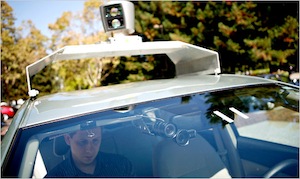
Google has been testing automated car technology on the roads of California lately. With a safety driver in the driver’s seat ready to take over in case of emergency, Google’s cars have logged over 140,000 miles and have only been in one accident – and that accident was a human driver rear-ending the Google car.
The Google cars use video cameras, radar sensors, and a laser range finder to “see” other traffic. It also uses detailed map information that Google collects ahead of time to navigate the road. Google says they hope that automated cars of the future could save lives and cut energy consumption. I’m just hoping that I can have my car drive me around so I can use my computer while I’m in the car. I could save so much time! As Wayne Campbell once said, “It will be mine. Oh yes. It will be mine.”
Q: I hear there are new Windows phones coming out. What should I know about them?

First, “Windows Phone 7” is not “Windows 7” on a phone. In other words, the Windows operating system that you may be using on your PC is not what you’ll see on a phone. Unfortunately, Microsoft’s versioning for their mobile operating system, previously called “Windows Mobile”, was at number 6, hence Windows Phone 7. However, Microsoft has not shied away from trying to leverage their marketing for Windows 7 on PCs to Windows Phone 7. In my estimation, this will only lead to customer confusion as people will think the two are somehow related, when in fact the only thing they truly share is the name “Windows”.
Windows Phone 7 does not use the now familiar icon-based interface that is primarily used on the Apple iPhone, Palm Pre phones, and Google Android phones. It uses an interface Microsoft calls “Live Tiles”. Microsoft claims they are trying to build a phone that is “thoroughly modern”. Because Microsoft is so behind the 8-ball in the smartphone market, many experts believe Microsoft was forced to create something different simply in an attempt to stand out. Whether Live Tiles is actually better than its competitors or simply any good at all will be up for debate until the phones are released. The bottom line is that you should thoroughly test out a Windows Phone 7 device before buying.
Windows Phone 7 is a brand-new operating system, completely rewritten from scratch. What this means is if you currently own a Windows Mobile phone, any apps you have purchased for it will NOT work with Windows Phone 7 devices. For Microsoft, Windows Phone 7 is in essence a complete reboot on their smartphone strategy. Again, many experts believe that Microsoft had to completely revamp their smartphone offering because new competitors had so thoroughly changed the market. They’re taking a gamble by abandoning current Windows Mobile owners, but it may be Microsoft’s only option to stay viable in the smartphone market.
“Windows Phone 7” is not a device. It is an operating system. Microsoft is not making an actual phone. They are making an operating system that other companies will build phones around. The first devices are reported to be from HTC, Samsung, LG, Sony, and Dell. So unlike the iPhone, in which Apple makes both the hardware and software, you can’t just ask for a “Windows Phone”. You’ll need to test the multitude of devices that will be available to make sure you pick the one that fits you the best.
As I mentioned at the start, you would be wise to see how the market for Windows 7 Phone shakes out. This is true for any new technology, but this may be especially true for Windows 7 Phone. Microsoft has been in the smartphone market for a long time but let new competitors pass them by quickly. It may be too late for Microsoft to be a significant player. For example, technology research company Gartner predicts that the new phones may increase Microsoft’s share to 5.2% from 4.7%, but eventually will decline to 3.9%. So pay attention to Windows Phone 7, but take your time before jumping in.
If you have a technology question, feel free to submit it to me and it may be featured in a future article!


